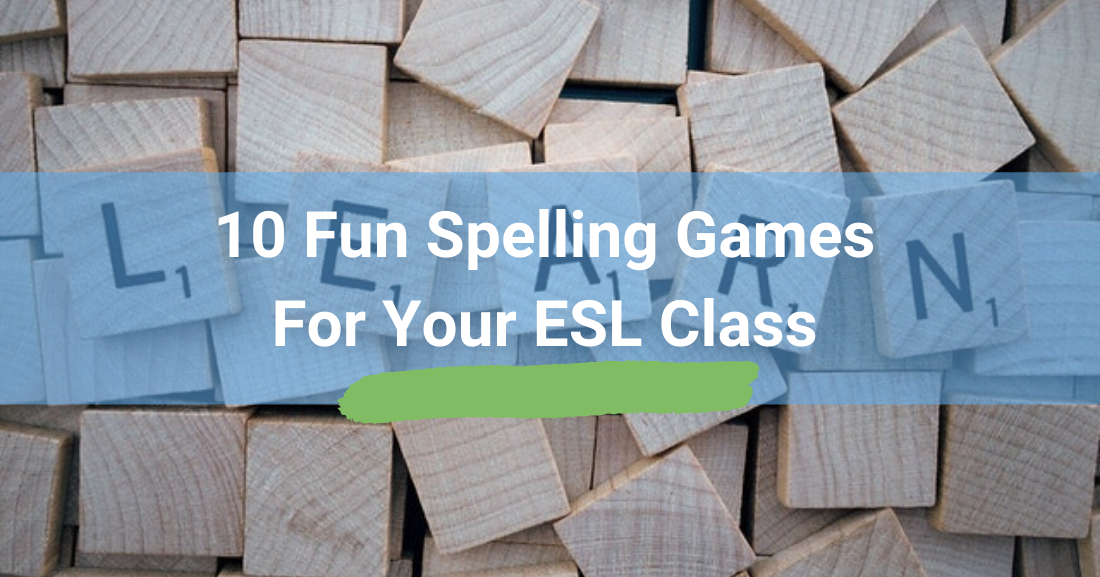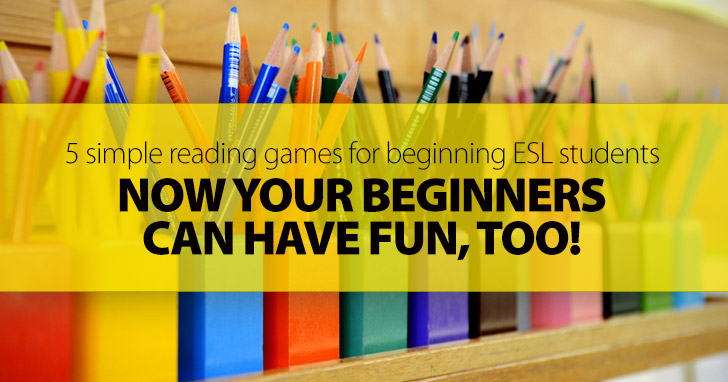10 Fun Spelling Games for Your ESL Class


They’re not ready to read a book. Even short stories are too complex. Forget about traditional vocabulary and reading games. But just because their skill levels are at the start doesn’t mean their fun level has to be, too. Here are 5 games you can play with beginning reading students that won’t overwhelm them with difficulty but are sure to create fun in your classroom!

This reading game takes as much room as you can afford to offer, and it can be as simple or complicated as you want to make it. The basic goal of the game is for players to get from the start to the finish of a paper path. To set up, decide on the words you want your students to read, and write each on a standard sheet of paper; laminate them if you so choose. Using those pages as well as blank ones, make one or several paths on the floor from the start point to the finish. (Think along the lines of paving stones.) When a student takes his turn, he rolls a standard six sided die. He is then allowed to move that many spaces (sheets of paper). If he encounters a page with a word written on it during his move, he must read the word. If he reads it, he continues to move his full number of spaces. If he cannot read the word, read it for him, but he must stay on that space and cannot pass that space until his next roll. Students choose which path they will take along the pages, and the first one to reach the finish wins.
This game can take as little as one or two minutes or as many as you want to fill, so it makes a great time filler to keep on hand for those down moments in class. To prepare for the game, write many words on a blank piece of paper in random order and positioned at all angles. The more words that are on the page, the better. Make sure you include words that your students can read easily as well as those that are more of a challenge. Then make enough copies of the page for each of your students to have one. To play, you read a word to your class. They race to find that word on the page. The first one to find it reads it out loud and then circles it or crosses it out. That person scores one point. Then wait until everyone in class has found the word. Read a second word, and students then search for that one on the page. The first to find it scores a point. As you call out more words, students will be reading many of the words on the page. It’s a great way to get in lots of reading practice without your students getting bored. Play until someone reaches a certain number of points or until you have called out all the words you want your students to read.
This reading relay may be a bit confusing at first, but it will become easier the more often you play it. You will divide your class into teams, and each team will need a list of target words, a pen or pencil, several loose letters they can use to spell out those words (game tiles, letters cut from cereal boxes, magnetic alphabets, alphabet beads, etc.), and a desk or table on which they can work. The first player from each team comes to the table and chooses a word from the list. She then spells that word out using the letters at her station and turns the list face down. The second player comes up and must read the word the first player arranged with the playing pieces. If he reads it correctly, he turns over the list and crosses that word off. He then chooses another word from the list and spells it out with the letter pieces. He turns the list face down, and the next player comes up. She reads the word, crosses it off the list, and spells out another word. Play continues until one team has successfully spelled out and read every word on the list.
If you made word pages for “Choose Your Path Wisely” (#1 above) here is a way you can make them work double duty (that is, if they survived the game). Scatter the word pages on the floor in an open area, and gather some bean bags for the game. Have each student toss their beanbag into the playing area. She must read whatever word the beanbag lands closest to. If she does, she scores a point and you remove the word from the playing area. (You can make the game even more challenging by having students give the definition of the word or use it in a sentence as well.) Students take turns tossing and reading until all the word pages are gone. The student with the most points wins.
Come Together Kids has a great reading game designed for two to four players that can be very effective in the ESL classroom. You can even have students make their own set of game cards to use during free learning periods. Give each student a list of target reading words (you will want to have at least twenty) as well as several blank index cards. Students write one reading word on each index card (they will get some writing practice in, too). In addition, students take between five and fifteen (depending on how long your word list is) index cards and write “BANG!” on each of them. Shuffle the cards and the game is ready. Give each group a paper bag, can, basket, or some other container to put their cards in. Players take turns pulling one card from the container and reading the word on it. If they read the word correctly, they keep the card. If a player pulls a BANG! card, she must put all of her cards back in the container. Play continues until you call time up. At that point, the player with the most cards in his possession is the winner.
Try one or more with your students, and watch as the smiles take over! :)
Do you have great ideas for beginner reading games? We want to hear them! Share them in the comments below.